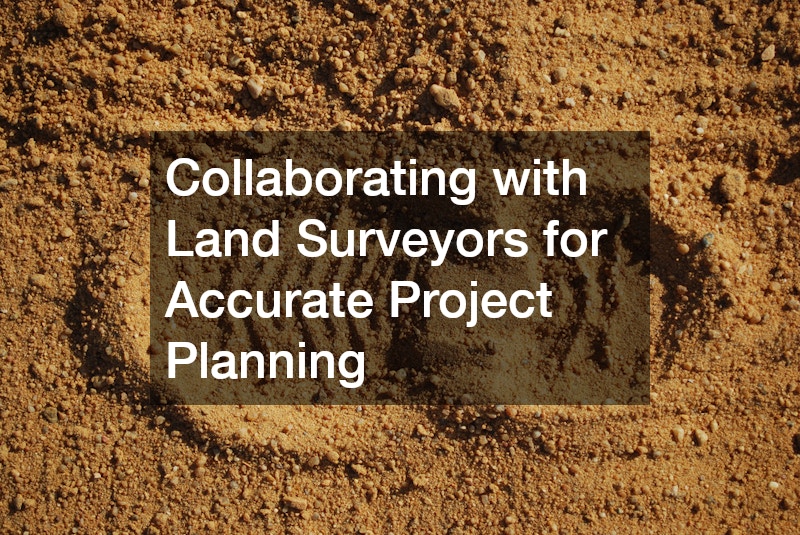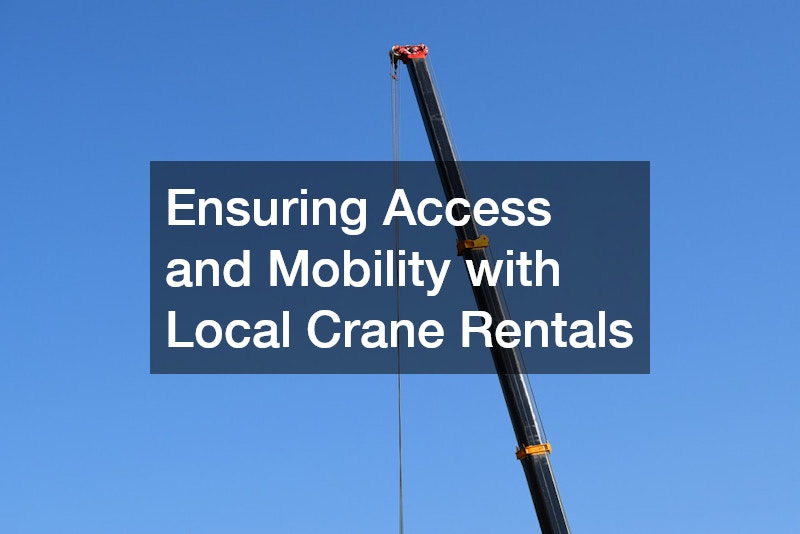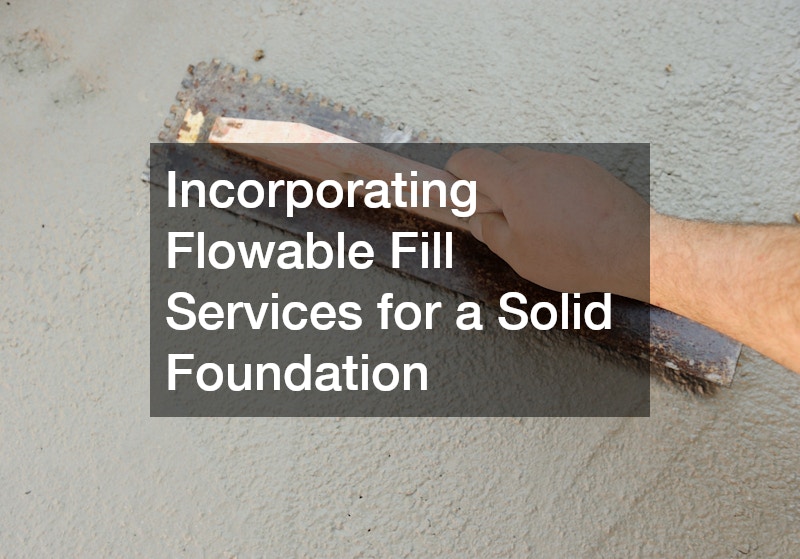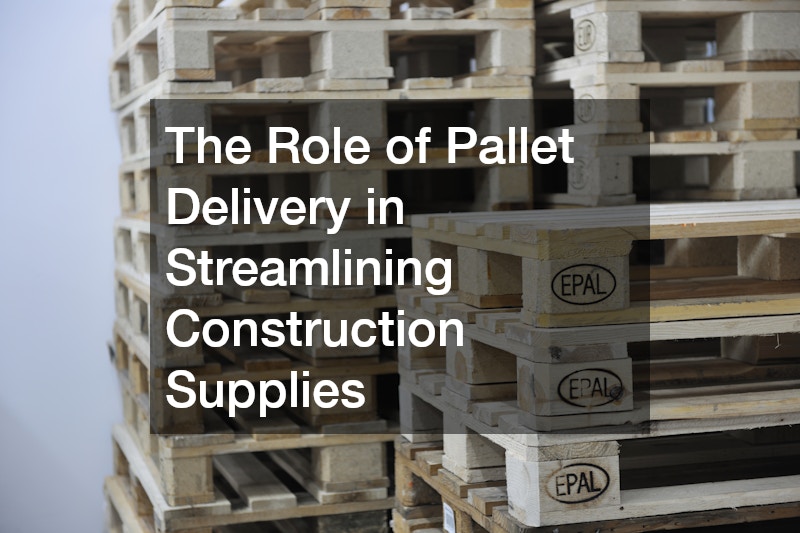Warehousing construction is a multifaceted venture that requires meticulous planning and execution. From the initial site preparation to the final touches, every step involves intricate processes that ensure the successful completion of the project. This article delves into the crucial aspects of warehousing construction, providing insights into collaboration, equipment needs, and regulatory considerations.
Each component of the construction phase plays a pivotal role in the efficiency and functionality of the warehouse. For instance, selecting the right local crane rentals and ensuring accurate land surveys can significantly impact the project’s timeline and cost-effectiveness. Understanding the complexities involved in warehousing construction allows stakeholders to make informed decisions, optimizing outcomes for both present and future operations.
In the following sections, we will explore various elements essential to warehousing construction, from site preparation to sustainable waste management. By examining these components, we aim to provide a comprehensive guide that supports industry professionals and construction managers in achieving construction excellence.
The Importance of Site Preparation in Warehousing Projects
Site preparation is a critical step in warehousing construction, laying the foundation for all subsequent activities. It involves tasks ranging from clearing the land to grading the surface, all of which play a role in ensuring a stable and suitable environment for construction. Proper site preparation enhances the structural integrity of the warehouse and mitigates potential challenges during the building phase.
Collaborating with experts, such as land surveyors, ensures accuracy in site preparation. Surveyors provide precise data regarding the land’s topography, enabling project managers to plan effectively. This collaboration is vital in identifying potential issues early, such as drainage problems or soil instability, allowing for proactive solutions.
Incorporating technologies like grader blade barstock can further refine the site preparation process. These tools help in achieving even and smooth surfaces, an essential requirement in warehousing construction. By investing in comprehensive site preparation, developers can reduce the risk of delays and additional costs, leading to efficient project execution.
Collaborating with Land Surveyors for Accurate Project Planning

Land surveyors are indispensable in the initial stages of warehousing construction, providing crucial insights that shape the project’s blueprint. Their expertise in measuring land dimensions and mapping terrain features ensures that construction plans are accurate and feasible. Without precise surveying, the risk of miscalculations and subsequent construction errors increases dramatically.
Surveying aids in identifying boundaries and encroachments, which is fundamental in avoiding legal disputes and ensuring compliance with local regulations. This aspect of warehousing construction is often overlooked but remains essential for smooth project progression. By working closely with surveyors, developers can optimize land use and align their structures with municipal guidelines.
Furthermore, employing modern surveying technologies enhances accuracy and project efficiency. Tools like drones and geographic information systems (GIS) enable surveyors to gather data swiftly and comprehensively. These advancements not only streamline the planning process but also position warehousing projects for success from the outset.
Efficient Waste Management Solutions for Your Construction Site
Effective waste management is a cornerstone of sustainable warehousing construction. Construction sites generate substantial waste, and managing this efficiently minimizes environmental impact and adheres to regulatory standards. One practical solution is the utilization of a comprehensive waste management plan that encompasses recycling, reusing, and reducing waste output.
Engaging services like a dumpster rental can significantly ease the burden of waste disposal. Dumpsters provide a centralized location for waste collection, streamlining the removal process and ensuring the construction site remains orderly. Proper segregation and disposal of waste not only enhance site aesthetics but also contribute to sustainability efforts.
Additionally, partnering with waste management professionals ensures adherence to environmental regulations. These experts help in identifying hazardous waste and implementing correct disposal methods. By focusing on efficient waste management, warehousing construction projects can achieve both operational and ecological goals.
Ensuring Access and Mobility with Local Crane Rentals

Local crane rentals are integral to the logistics of warehousing construction, providing the lifting power needed to handle heavy materials safely and efficiently. Cranes facilitate the vertical and horizontal movement of construction components, accelerating the building process. Selecting the right type and size of crane is crucial, depending on the specific demands of the construction site.
Local crane rentals offer the advantage of reduced transportation costs and quicker access to equipment. Given the intricacies of warehousing construction, having reliable crane services nearby ensures timely support and immediate resolution of unforeseen challenges. This proximity to resources is particularly beneficial during critical phases where delays can lead to significant financial repercussions.
Furthermore, operators from local rentals are often well-versed with the regional terrain and conditions, adding an extra layer of safety and efficiency. Their expertise can prevent mishaps, optimize crane performance, and contribute to a smoother construction process. Therefore, choosing the right local crane rentals is an investment in the successful completion of your warehousing project.
Organizing Your Warehouse: Best Practices for Enhanced Operations
An organized warehouse is essential for maximizing efficiency and ensuring smooth operations. Start with a well-planned layout that designates specific zones for receiving, storage, picking, and shipping, with frequently accessed items stored near packing areas to minimize travel time. Utilize vertical space with shelving and pallet racking to maximize storage capacity.
Equip your warehouse with essential tools and systems like those from compressed air services, which can be invaluable for powering pneumatic tools and keeping the workspace clean. Inventory management software can streamline operations by tracking stock levels in real-time, automating reordering processes, and ensuring accurate counts with barcode scanners.
Routine maintenance is crucial for safety and efficiency. Schedule inspections for equipment such as forklifts and pallet jacks, and regularly check hoses and fittings in compressed air systems to prevent leaks. Employee training is vital; teach staff proper storage techniques, safe equipment operation, and the importance of cleanliness. Lastly, implement a waste management plan that includes dumpster rentals for easy disposal of unwanted materials. By following these practices, you can create a well-organized warehouse that enhances operations, boosts productivity, and supports your business goals.
Incorporating Flowable Fill Services for a Solid Foundation

Flowable fill services are essential in warehousing construction, providing a stable and durable foundation for the building. This material, often referred to as controlled low-strength material (CLSM), is used as a backfill solution, offering advantages over traditional compacted soil. Its self-leveling nature ensures that voids and gaps are filled uniformly, reducing the potential for settling and structural issues.
Working with local flowable fill services offers additional benefits, such as reduced transportation costs and faster delivery times. These services are familiar with regional materials and conditions, ensuring the optimal mix design tailored for local site conditions. A well-prepared subbase with flowable fill minimizes the risk of foundation-related problems, enhancing the longevity of the warehouse structure.
Moreover, using flowable fill can accelerate the construction timeline. Its quick-setting properties allow for faster subsequent construction phases, reducing overall project duration. By integrating flowable fill services into warehousing construction plans, developers can achieve a robust and reliable foundation, laying the groundwork for future facility operations.
The Role of Pallet Delivery in Streamlining Construction Supplies

Pallet delivery services are crucial components in the logistical planning of warehousing construction projects. These services provide a systematic approach to material transportation and handling, enhancing efficiency and organization on the construction site. Utilizing pallets for delivery ensures that building materials are protected from damage during transit, maintaining their quality upon arrival.
By incorporating pallet delivery, construction teams can streamline inventory management and storage processes. This method allows for easier tracking and movement of materials, reducing the likelihood of delays and misplaced resources. Well-organized logistics supported by pallet systems directly translate to cost savings and improved project timelines.
Furthermore, these services facilitate the rapid and safe transport of large quantities of materials. The standardized sizes and versatility of pallets enable seamless integration with storage facilities and distribution networks. As a result, pallet delivery services become an indispensable asset in the warehousing construction industry, promoting efficient supply chain management.
Planning for Utility Needs During Warehousing Construction
Planning for utility needs is a critical phase in the warehousing construction process, ensuring that essential services are available and operable upon project completion. This involves coordinating with utility providers to design and implement infrastructural connections, such as water, electricity, and telecommunications. Early and proactive planning can prevent costly delays and disruptions to construction activities.
Understanding the site’s utility requirements helps in optimizing the layout and design of the warehouse. For instance, ensuring adequate electrical supply is paramount for operational efficiency and safety within the facility. Collaborating with experts provides insights into the appropriate capacity and configuration needed to support warehousing operations effectively.
Moreover, adherence to local regulations and guidelines is mandatory in utility planning for warehousing construction. Compliance ensures that the project aligns with environmental norms and secures necessary permits. Strategic planning and consultation commit to addressing utility needs, thereby contributing to the seamless transition from construction to operational phases.
Navigating High Loads with Bucket Truck Escorts for Safety
Bucket truck high load escorts are essential for the safe transport of oversize construction materials during warehousing construction. These trucks facilitate the movement of high-load items by navigating potential obstacles, such as power lines and traffic signals. Escort services ensure that these loads reach their destination without incident, safeguarding both the materials and the surrounding environment.
Employing bucket truck escorts alleviates logistical challenges associated with transporting large or high materials. These services are skilled in roadway navigation and leverage advanced communication tools to coordinate travel routes. As a result, construction teams can avoid delays caused by infrastructure limitations and optimize project timelines efficiently.
Additionally, bucket truck high load escorts contribute to safety compliance during warehousing construction. Their familiarity with transportation laws and regulations ensures adherence to prescribed routes and securing permits, preventing potential legal issues. With the assistance of these services, construction projects can maintain high safety standards while achieving timely delivery of critical materials.
Essential Amenities: The Case for Porta Potty Trailer Rentals
Porta potty trailer rentals are a critical provision for workforce comfort and hygiene during warehousing construction. Construction sites often lack permanent restroom facilities, and ensuring accessible sanitation helps maintain a clean and productive environment. Porta potties provide convenience for construction teams, allowing them to focus on their tasks without logistical concerns.
Renting porta potty trailers supports compliance with workplace health and safety regulations, preventing potential site shutdowns due to inadequate sanitation. These units are equipped with necessary amenities and are regularly maintained, ensuring a hygienic environment. Moreover, their mobility allows for strategic placement across the construction site, accommodating varying work areas.
Implementing porta potty trailer rentals contributes to a more efficient worksite by reducing downtime associated with breaks and travel to distant facilities. This amenity enhances worker morale and productivity, supporting successful project outcomes. In warehousing construction, addressing basic human needs is as vital as technical execution, solidifying the importance of proper sanitation solutions.
Maximizing Site Efficiency with Proper Grading Techniques
Proper grading is a foundational aspect of warehousing construction, affecting everything from drainage to structural stability. The grading process involves leveling and preparing the site surface, ensuring it meets specific slope designs and drainage criteria. Effective grading techniques prevent water accumulation and erosion, which can undermine the warehouse’s foundation.
Utilizing advanced grading tools, such as grader blade barstock, enables construction teams to achieve precision and uniformity. This equipment shapes and smoothes the terrain, optimizing conditions for the subsequent phases of construction. By investing in skilled personnel and high-quality grading technologies, warehousing projects can avoid costly reworks and maintain construction momentum.
Furthermore, sound grading practices facilitate the efficient installation of utilities and underground facilities. With a well-prepared substrate, crews can expedite the laying of pipelines, cables, and other infrastructural elements. Adequate grading sets the stage for a successful construction project, enhancing site performance and long-term structural reliability.
Understanding Local Regulations for Warehouse Construction
Compliance with local regulations is paramount in warehousing construction to avoid legal complications and ensure project approval. Building codes, zoning laws, and environmental regulations dictate specific standards that must be met throughout the construction process. Familiarity with these requirements ensures that the warehouse adheres to safety, functionality, and sustainability guidelines.
Coordinating with local authorities and consulting regulatory experts help navigate the complexities of permit applications and inspections. This proactive approach enables construction teams to address potential issues before they escalate into costly delays. Understanding and respecting local regulations promote a positive relationship with community stakeholders and instill confidence in the project’s governance.
Furthermore, adhering to regulations can enhance the warehouse’s operational efficiency and market value. Buildings that comply with green standards and modern practices attract potential clients and reduce long-term operational costs. Incorporating regulatory knowledge into the construction strategy positions warehousing projects for enduring success and competitiveness.
Creating a Sustainable Waste Management Plan with Dumpster Rentals
Developing a sustainable waste management plan is critical in warehousing construction to minimize environmental impact and enhance operational efficiency. Dumpster rentals play a crucial role in implementing this plan by providing facilities for organized waste collection and disposal. These dumpsters accommodate various waste types, facilitating recycling and minimizing material sent to landfills.
Partnering with dumpster rental services ensures adherence to environmental regulations and supports sustainable construction practices. These services offer expertise in waste segregation, recycling opportunities, and safe removal methods. By prioritizing sustainability in waste management, warehousing construction projects can achieve ecological goals without compromising site functionality.
Moreover, efficient waste management contributes to a cleaner and safer construction environment. With dumpsters in place, construction debris is promptly removed, reducing hazards and maintaining site organization. This systematic approach reflects responsible construction practices, enhancing the reputation and appeal of the warehousing facility upon completion.
Warehousing construction is a complex process that demands attention to numerous critical aspects to ensure successful project outcomes. From detailed site preparation to the integration of modern technologies and services, each factor plays a vital role in the construction timeline and facility functionality. Embracing a comprehensive approach that considers collaboration, resource management, and regulatory compliance is essential for achieving construction excellence.
By utilizing services such as local crane rentals, flowable fill, and pallet deliveries, developers can streamline operations and optimize resource allocation. Incorporating sustainable and efficient practices like porta potty trailer rental and comprehensive waste management further enhances construction site efficiency and responsibility. Recognizing the value of safety measures, like bucket truck high load escorts, secures the project’s success and adherence to safety regulations.
Ultimately, understanding the integral components of warehousing construction not only facilitates the building of a robust warehouse but also improves its operational longevity and environmental impact. The strategic planning and execution of these construction elements ensure that warehousing facilities remain competitive and valuable resources within their industries.





